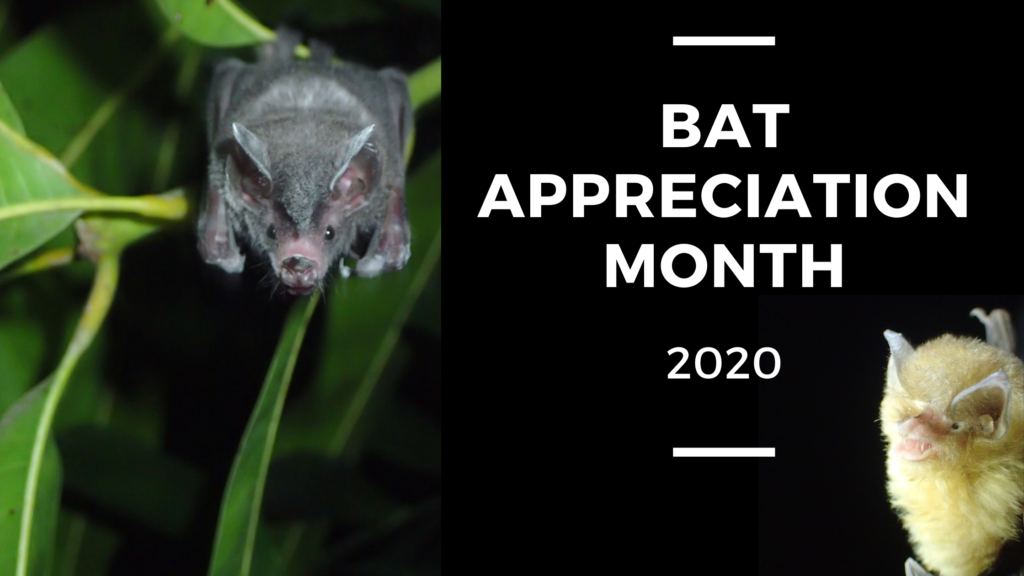Go into any Halloween store, and you’ll find some kind of bat decoration – usually either black silhouettes or black flappy things with glowing red eyes. A common creepy theme is the bat coloring – always black, or maybe dark brown. From far away, it makes sense that bats seem uniformly dark colored – but did you know that bats can have a range of fur color and patterns?
Leaf It to the Bats
Many of the “tree bats” can be swiftly identified by their unique coloring – a range of orange, reds, yellow and even some frosted tips. These aptly nick-named bats typically roost amongst leaves – such as amongst cottonwood leaves (red bats) or nestling between the ridges of a palm frond (yellow bats). Their coloring is likely a form of crypsis, letting them blend in to their background. While it seems like a yellow bat would stand out against some green palm leaves, they actually are very well matched to the slightly yellow-grey of a dead palm leaf.
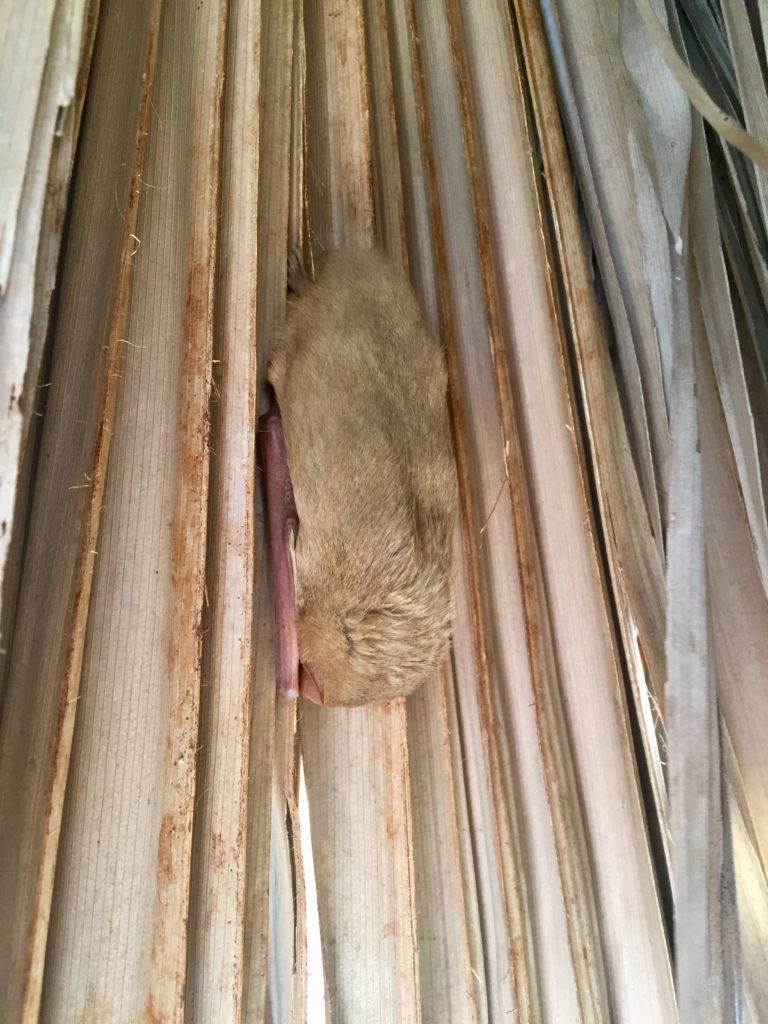
Under The Leaf Tent
In addition to a range of color, some bats also have distinct fur patterns, such as stripes or spots. Stripes are usually found on the face or back, particularly among many of the Neotropical leaf-nosed bats. Many of these bats roost in leaf “tents”, which they create by chewing along the veins of the leaves until they fold in half. What good could stripes possibly be in this environment?
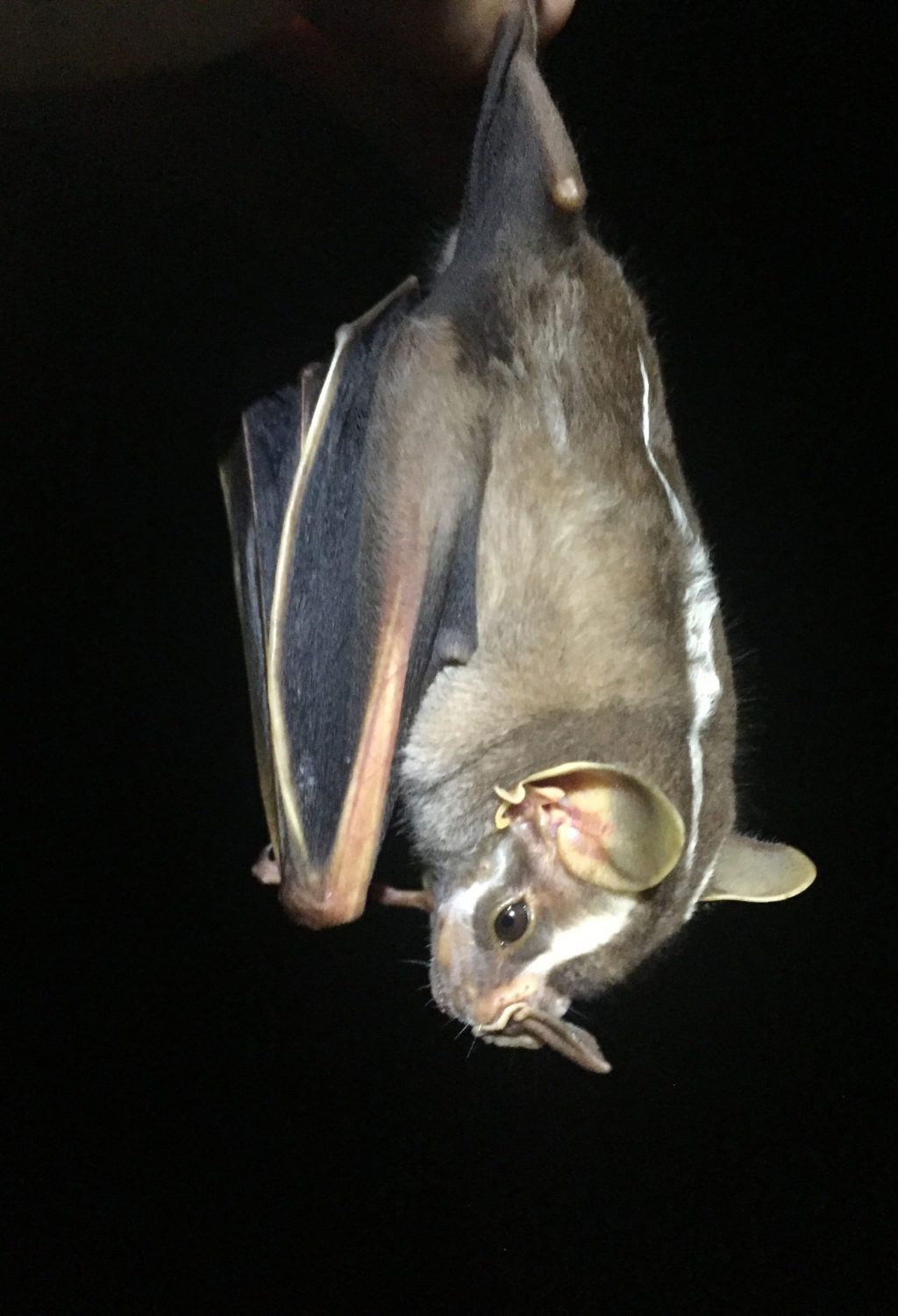
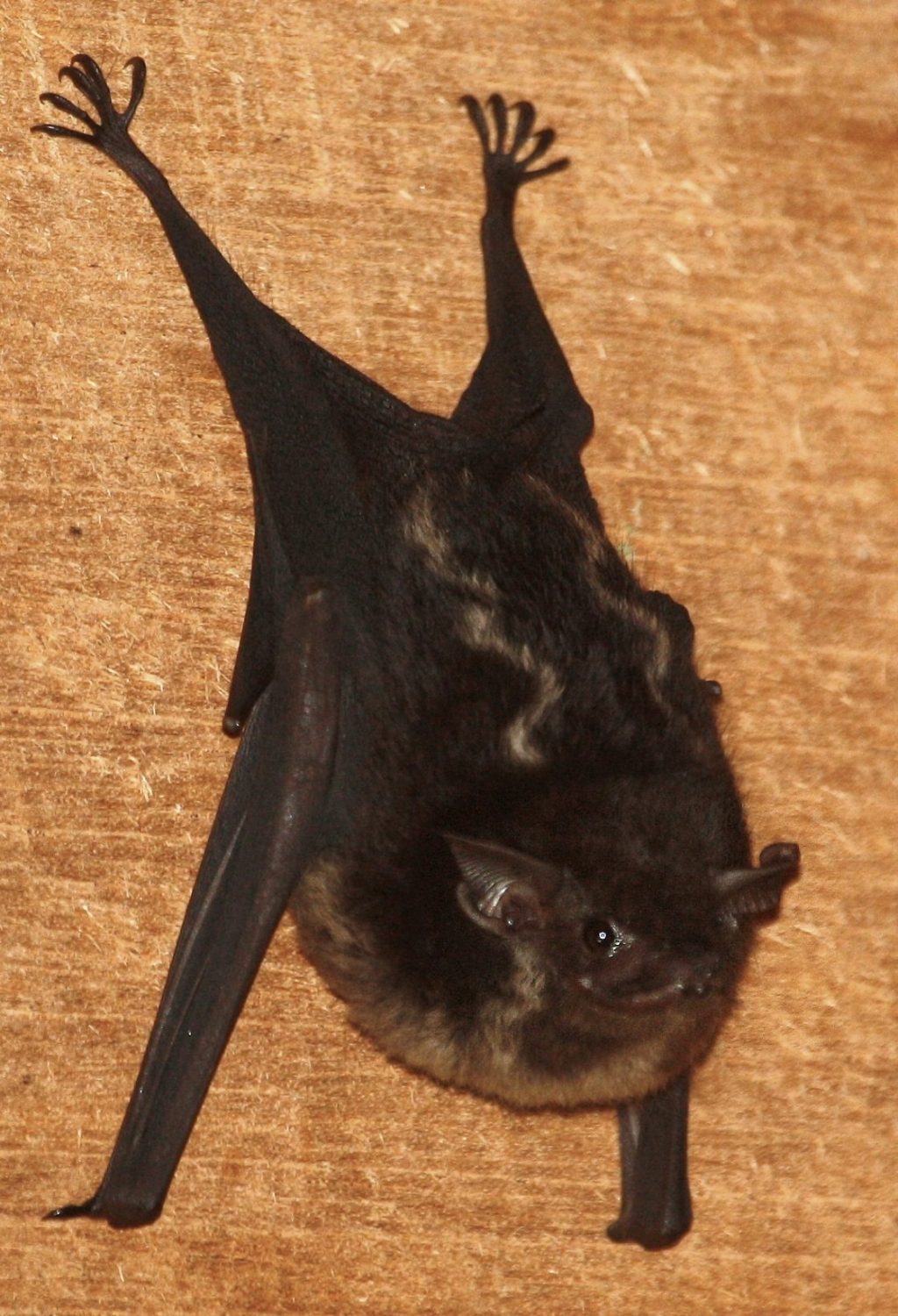
A study in 2011 compared roosting habitats and fur (pelage) marking among hundreds of different bat species (Santana et al. 2011). They found that species that roost in vegetation had more markings, especially stripes and neck collars. They hypothesize that the stripes act as form of crypsis called “disruptive coloration”. Stripes or other color variations can break up the outline of the animal, thus preventing a predator from being able to detect it as easily (think of a tiger crouching in the grass). Since bats that roost in tents or other foliage may be vulnerable to predators during the day, their stripes and patterns may help make it harder to them to be seen in their roosts.
Orange You Glad I Didn't Say Banana?
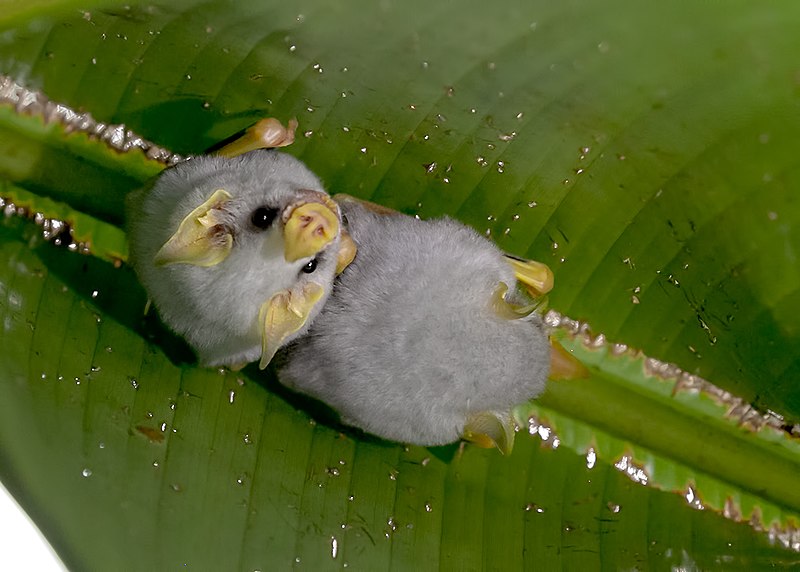
In addition to different fur coloring, the skin on the ears, noses and wings of bats can also range in color. A particularly striking example of this coloring can be seen in the Honduran white-bat (Ectophylla alba) – the ones that look like little cotton puffs with wings. While their fur is while, their nose, ears, and wings are characterized by a bright yellow color. Turns out, that coloring is the result of their diet.
The bats are able to channel carotenoids, a photosynthetic pigment found in plants, from their diet of figs into their skin (Galván et al. 2016). These yellow and orange carotenoids are the same pigments that make carrots orange, and are why your parents told you eating carrots would keep your eyes healthy. The particularly carotenoid found in bats is called lutein. It’s responsible for preventing cell damage and is particularly important in the human eye. It’s pretty neat that bats are able to deposit this pigment into their skin, and may be a way for us to better understand how carotenoids function in other mammals (like humans)!
Maybe It's Fashion?
Humans aren’t the only ones who express themselves (or ‘communicate’) with their hair or clothing. Different colors and patterns in bats likely also play a role in communicating between bats. For example, many bats display sexual dimorphism in patterning – this means that males and females look different. For example, in the yellow-shouldered bats of Central and South America, males have dark, reddish-orange shoulder patches. Males of some other species also have fancy shoulder decorations, like the epauletted fruit bats found in Africa. In another Neotropical bat, the yellow-throated bat, males have bright yellow-ish orange throats. It is thought that this coloring may signal the quality of the male to the female, though more work needs to be done to figure out the details of when and how this is important.

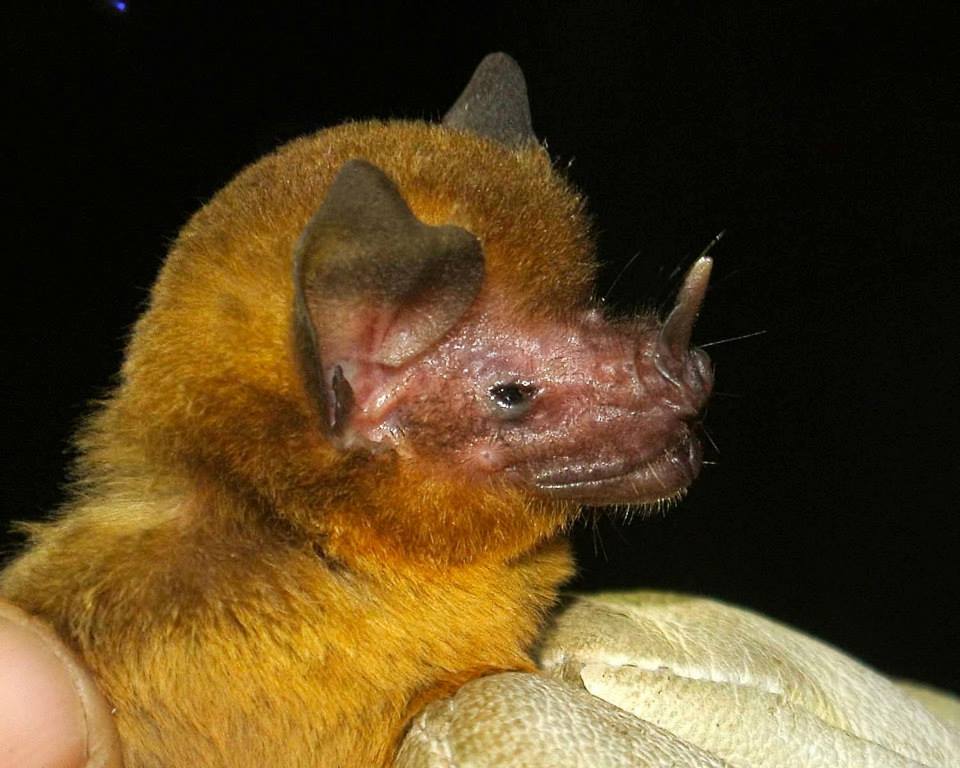
References:
Santana SE, Dial TO, Eiting TP, Alfaro ME (2011) Roosting Ecology and the Evolution of Pelage Markings in Bats. PLoS ONE 6(10): e25845.
Galván, I., Garrido-Fernández, J., Ríos, J., Pérez-Gálvez, A., Rodríguez-Herrera, B., & Negro, J. J. (2016). Tropical bat as mammalian model for skin carotenoid metabolism. Proceedings of the National Academy of Sciences, 113(39), 10932-10937.
